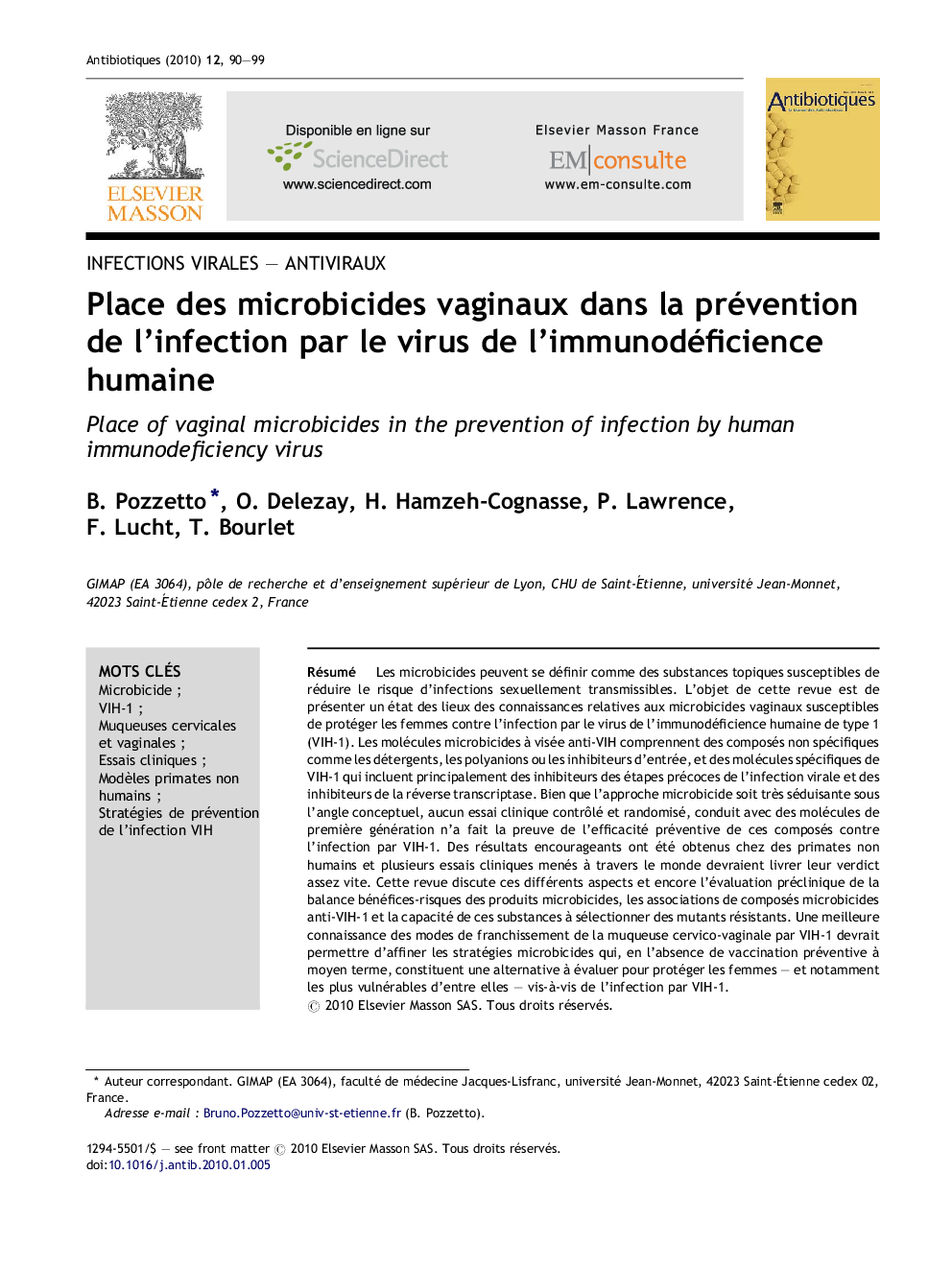| Article ID | Journal | Published Year | Pages | File Type |
|---|---|---|---|---|
| 3395995 | Antibiotiques | 2010 | 10 Pages |
Abstract
Microbicides can be defined as topical compounds able to reduce significantly the risk of sexually-transmitted diseases. The aim of this review is to present an overview of the knowledge concerning the capacity of vaginal microbicides to protect women against the sexual transmission of human immunodeficiency virus type 1 (HIV-1). Anti-HIV-1Â microbicides include non-specific compounds such as detergents, polyanions or entry inhibitors, and HIV-specific compounds that include mainly inhibitors of the initial steps of the virus cell cycle and reverse transcriptase inhibitors. Although the microbicide approach looks very attractive from the conceptual point of view, no controlled randomised clinical trial using first generation compounds has demonstrated any preventive protection against HIV-1Â infection. Encouraging results were obtained recently in models using non human primates and several clinical trials are in progression in different countries that will give their verdict very soon. The present review displays a summary of these different data and discusses further the preclinical evaluation of the benefit-risk balance of microbicides, the usefulness of combining different microbicide compounds and the ability of topical microbicides to select resistant viral mutants. A better knowledge of the way(s) the virus penetrates through the sexual mucosa could contribute to develop more adapted microbicide strategies. In the absence of short-coming perspective relative to HIV-1Â immunisation, microbicides must be evaluated as a valuable alternative to prevent women - and especially the most vulnerable of them- from being infected by HIV-1.
Related Topics
Health Sciences
Medicine and Dentistry
Infectious Diseases
Authors
B. Pozzetto, O. Delezay, H. Hamzeh-Cognasse, P. Lawrence, F. Lucht, T. Bourlet,
